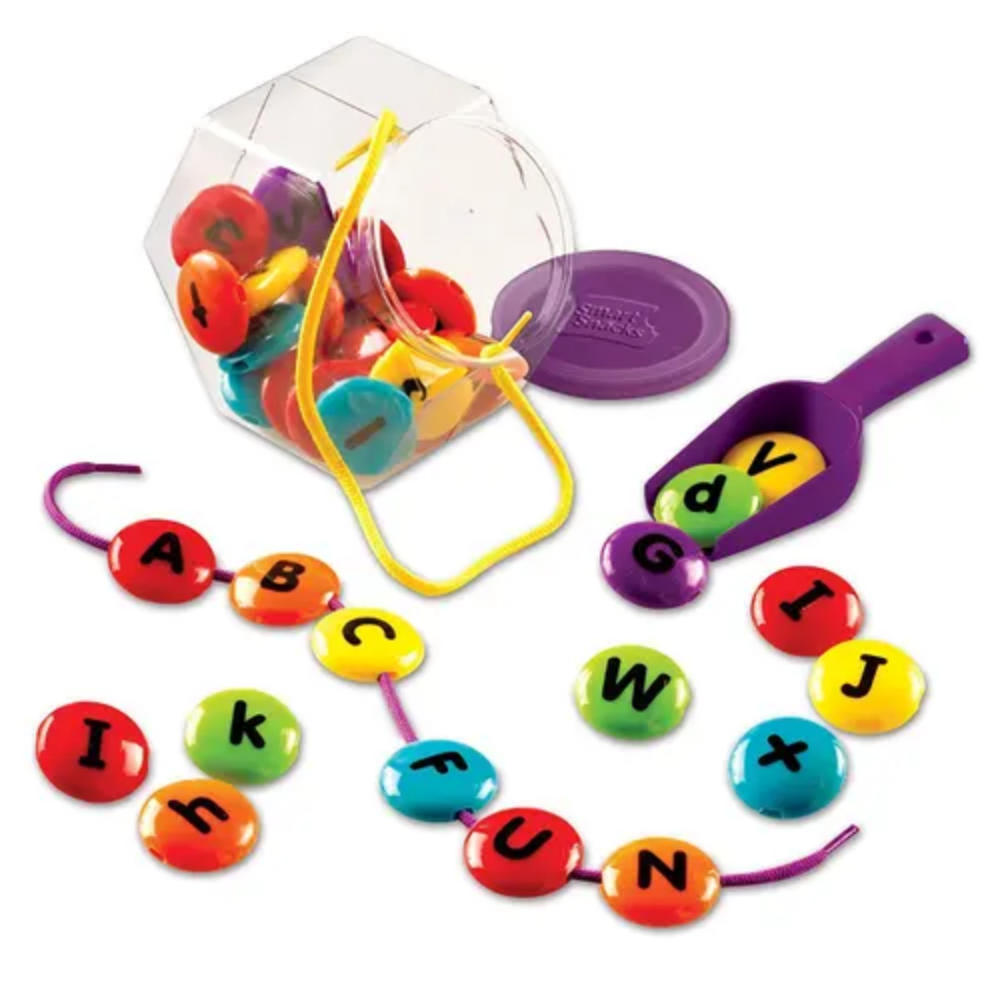Mid-Summer Minicamp for Five-Year-Olds
- Learning Resources Posted On Jul 14, 2022 | Math
Your soon-to-be-Kindergartener was built for summer! There’s so much to do, see, and explore, both inside and outdoors. If you’re looking for some fresh, fun ideas to help keep your rising Kindergartner engaged and learning for the rest of the summer, have we got the activities for you! Read on for three days’ worth of developmental, educational, and social-emotional activities – plus some bonus activities, just for fun. And don’t miss our summer minicamp activity ideas for three- and four-year-olds
Minicamp Day One:
Developmental Activity – Fine Motor Freezer Fun
Kick off your first day of camp with some fine motor fun! Threading is an age-appropriate challenge for four-year-olds, resulting in a colorful creation they can wear or display. Set out some pipe cleaners and pony beads and thread a bracelet, create a beaded pattern for your preschooler to follow, or stick some spaghetti sticks into a ball of molding dough and thread penne noodles to make Stegosaurus. Find more threading ideas here.
Educational Activity – Learning You Can Count On
Download this free, printable worksheet, grab some counters, and practice numbers and counting with your kiddo! Count the letters in their name (writing it out on a sheet of paper might help), their age, the number of siblings they have, and more!
Social Emotional Learning Activity – Paint a Rock
You may have seen the pretty, painted rocks people are leaving around neighborhoods across the country as a symbol of kindness. You can do the same! Take a walk and find some medium-sized rocks with nice flat or rounded surfaces. Clean them off and pop them in the oven at 350 for 15 minutes – you can use the time to talk about things that make your kids happy as inspiration for what they might draw. Let the rocks cool just a bit, then use crayons to draw their ideas! When the rocks are dry, use a Sharpie to write caring messages like “Kindness”, “Love”, or “Joy”. Then place them in your neighbors’ gardens to brighten up their days! Find other kindness activities here.
✨ Bonus Activity – Cool Down with a DIY Snowstorm ✨
End your first day of minicamp with another cool-down activity – making a snowstorm in a bottle! Gather a glass or see-through plastic jar, vegetable oil, white paint, glitter, and an Alka-Seltzer tab, and follow these instructions to make it snow inside!
Minicamp Day Two:
Developmental Activity – Get a Grip
Using the proper pencil grip is the key to legible writing. Help your kiddo practice this summer by providing a sheet of properly formed capital letters to trace using a variety of differently sized crayons, markers, and pencils. Around age five, kids should be able to manipulate a writing utensil with three fingers rather than move their wrists or arms. Learn more about proper pencil grasps here.
Educational Activity – Go on a Math Scavenger Hunt
Brush up on those math skills with a scavenger hunt around the house! Print this list of things to look for and set off to find everyday math items, including number words, items of certain sizes and shapes, pairs of things, and more!
Social Emotional Learning Activity – Create a Gratitude Wall
Playing school is a wonderful way to build your child’s creativity and imagination. It also allows your soon-to-be-scholar to mentally prepare for going to school and build the confidence they’ll need to thrive there. Set up some school-ish materials, like a chalkboard or easel, books, paper and crayons, and stickers, and follow your little one’s lead. Will they read to their stuffed animals? Teach you letters and numbers? Draw a picture?
✨ Bonus Activity – Build a Fort ✨
Nothing is nicer after a day of summer minicamp than a delicious popsicle! Follow our favorite recipe for fruit and veggie pops, working together to squeeze the lime, drop the ingredients into the blender, stir the elements, and insert the popsicle handles. Talk about the foods as you work with them – what color are they? What is their texture like? What letter does that food start with? How might it taste?
Minicamp Day Three:
Developmental Activity – Brew a Batch of Slime
Stretchy, sticky, and squishy, you probably know that slime is awesome. But did you know that slime also helps builds fine motor skills? Measuring, pouring, mixing, stirring, squeezing, smashing, rolling, and twisting are all great ways to strengthen hand muscles and build fine motor skills! Start your last day of minicamp off with some slime, using our favorite recipe.
Educational Activity – Print Letters in Playdough
Practice letter identification, letter sounds, and word building with this simple stamp-and-learn activity! Set out some molding dough (or make your own – another fun minicamp activity!), tools like plastic rolling pins, cutters, kid-safe scissors, and letter blocks or magnets. Then show your child how to flatten the dough and stamp a letter into it. Say the letter name as they stamp, make its sound, and say a word that starts with that letter. See if your child can find the letters in their name and stamp them all in a row.
Social Emotional Learning Activity – Have Fun with Physics
The forces of physics are all around us, and summer is a great time to see them in action. Floating in the pool, rolling a ball, and dropping an ice cream cone (oh NO!) are perfect examples of buoyancy, motion, and gravity. These simple activities will demonstrate some of the most fundamental properties of physics in a fun way – and you can follow up your lesson by making a simple machine (instructions included).
✨ Bonus Activity – Job Talk ✨
Print this free career worksheet, cut out the word cards and images, and match them up! Talk about each job, the responsibilities of each job, the qualities each requires, and which one interests your child the most (and the least).
 Shop UK Site
Shop UK Site 






























































